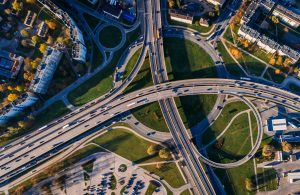The Benefits of Mapping Technology in Urban Planning
Urban planning plays a critical role in cities that function optimally and provide the highest degree of “liveability” for their inhabitants. The recent advent of advanced mapping technology has revolutionised the urban planning environment, offering planners powerful tools to analyse, visualise, and then optimise the provision of urban spaces.
Enhancing Data Collection and Analysis
Mapping technology allows urban planners to gather vast amounts of geospatial data efficiently and accurately. Geographic Information Systems (GIS) allow for the rapid integration of several data sources. Data from satellite imagery, census polls, infrastructure maps, and environmental studies can be seamlessly integrated providing a clear picture of the current state of cities and towns. Analysis of factors like population density, land use patterns, transportation networks, and environmental characteristics allows urban planners to gain valuable insights into the urban dynamics of specific urban spaces. Mapping provides the ability to visualise and overlay multiple data sets which simplifies the identification of patterns and correlations. Urban planners can then make evidence-based choices.
Improving Communication and Visualisation
Mapping technology provides powerful visualisation tools that facilitate effective communication and improve stakeholder engagement. 3D models and interactive maps depicting proposed developments can be created, illustrating their potential impact on the urban landscape. Stakeholders, including community members, government officials, and developers, can clearly understand and assess the implications of various planning decisions. The presentation of complex data in an accessible and engaging form is facilitated, fostering transparency, and promoting collaborative decision-making.
Promoting Efficient Infrastructure Planning and Design
Access to detailed geospatial data, allows urban planners to analyse existing infrastructure networks, identify those that need to be assessed, and their layout optimised to enhance accessibility, reduce congestion, and improve urban efficiency. The technology highlights potential risks and vulnerabilities ensuring that infrastructure development takes account of these factors early in the planning process.
Designing Smart Cities
The integration of mapping systems with Internet of Things (IoT) devices and sensors allows planners to create real-time monitoring and management systems which facilitate data-driven decision-making and efficient resource allocation. The technology can help optimise traffic flow, manage energy consumption, or monitor air quality. By harnessing the power of this technology, planners can design smarter, more sustainable cities that prioritise the well-being of their residents, minimise detrimental environmental impacts, and enhance the quality of life of their residents.
Engage with Urban Planners that Understand the Value of Mapping
The volume of data that needs to be collated to create a modern map is significant. It is also only useful if the data is easy to access, share, and use. Mapping tools used by The Practice Group allow for all these facilities and far more. Our maps allow us to assess which infrastructure will best suit a specific area and optimally alleviate congestion, for example. For the latest technology in mapping for your specific environment, consult with The Practice Group today.

